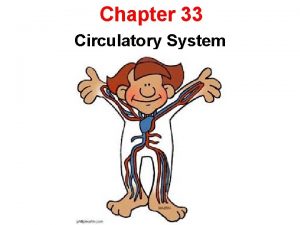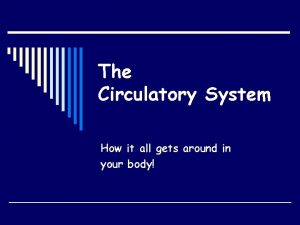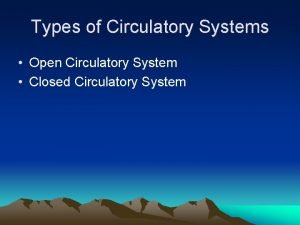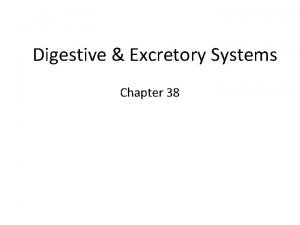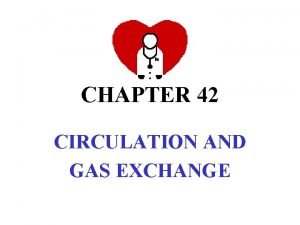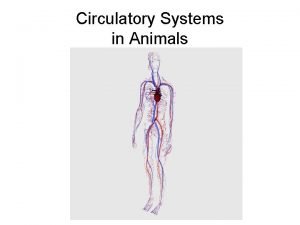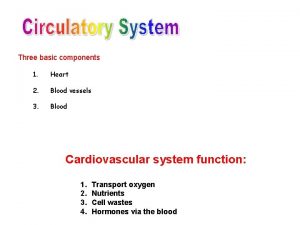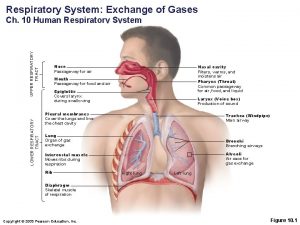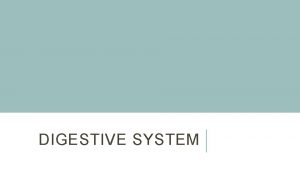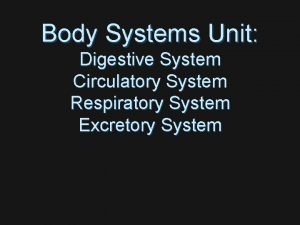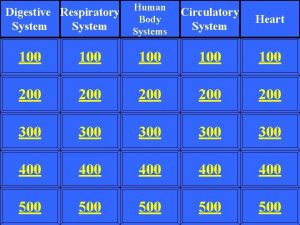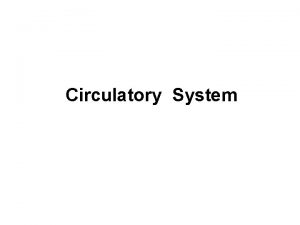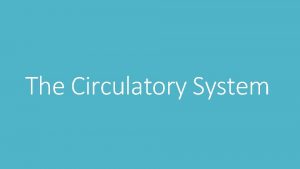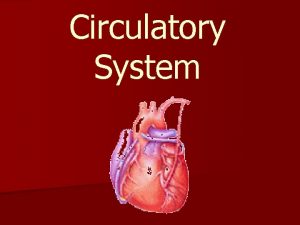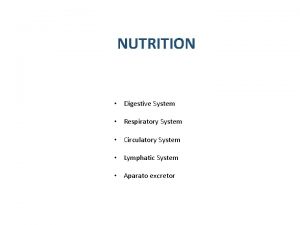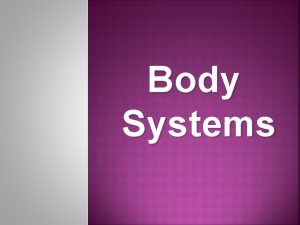Circulatory Respiratory and Digestive systems Circulatory System Video


















- Slides: 18

Circulatory, Respiratory, and Digestive systems

Circulatory System Video • https: //www. youtube. com/watch? v=5 t. Tkx. Ye. NF 9 Q 2

Digestive System Sample Footer Text 2/8/20 XX 3

Digestive System Functions • Digestion: the breakdown of food into molecules that can be absorbed by the body • Absorption • Responsible for maintaining homeostasis Sample Footer Text 2/8/20 XX 4

Parts of the Digestive System • Digestive tract: mouth, pharynx, esophagus, stomach, small intestine, large intestine • Accessory organs: teeth, tongue, salivary glands, liver, gallbladder, pancreas Sample Footer Text 2/8/20 XX 5

Organs of the Digestive System • Stomach: digestion • Pharynx: throat • Esophagus: tube from mouth to stomach, inside pharynx • Small intestine: absorbs nutrients • Large intestine: absorbs water and salts Sample Footer Text 2/8/20 XX 6

Accessory Organs in the Digestive System • Liver: creates bile which helps break down fats • Gallbladder: stores bile • Pancreas: creates enzymes which break down fats, starches, and sugars Sample Footer Text 2/8/20 XX 7

Digestive System and Maintaining Homeostasis • Toxin Excretion – indigestible materials Sample Footer Text 2/8/20 XX 8

Respiratory System Sample Footer Text 2/8/20 XX 9

Respiratory System Function • Breathing • Absorb oxygen from the air • Remove carbon dioxide from the blood • Responsible for maintaining homeostasis Sample Footer Text 2/8/20 XX 10

Respiratory System Organs • Nose and mouth • Pharynx: throat • Larynx: voice box • Trachea: windpipe • Bronchi: airways • Lungs Sample Footer Text 2/8/20 XX 11

Respiratory System and Homeostasis • Body temperature: exhaling warm air • Toxin excretion: carbon dioxide • p. H balance Sample Footer Text 2/8/20 XX 12

Circulatory System Sample Footer Text 2/8/20 XX 13

Circulatory System Function • Carries oxygen, nutrients, and hormones to cells • Removes waste products • Responsible for maintaining homeostasis Sample Footer Text 2/8/20 XX 14

Circulatory System Organs • Heart: pumps blood around body • Blood: delivers nutrients and oxygen all over the body • Blood vessels: carries blood around body • Lymph: cleanses out fluid, removes dead cells and cancer cells • Lymphatic vessels: help maintain fluid balance Sample Footer Text 2/8/20 XX 15

What is the difference between arteries and veins? • Veins: carry blood back to the heart • Arteries: carry blood away from the heart Sample Footer Text 2/8/20 XX 16

Circulatory System and Homeostasis • Body temperature: sweat • Blood pressure regulation Sample Footer Text 2/8/20 XX 17

Circulatory system lab • Follow directions on the lab worksheet • Turn it in at the end of the class, if you are not done it is homework (Due by Tuesday, 4/13) • Do not lose the worksheet, you may need it for your lab report • We will discuss the lab report on Wednesday (4/14) Sample Footer Text 2/8/20 XX 18
 Digestive system circulatory system and respiratory system
Digestive system circulatory system and respiratory system Circulatory system and respiratory system work together
Circulatory system and respiratory system work together Chapter 33 section 1 the circulatory system
Chapter 33 section 1 the circulatory system Tiny air sacs at the end of the bronchioles
Tiny air sacs at the end of the bronchioles Structure of cell
Structure of cell Conductive zone vs respiratory zone
Conductive zone vs respiratory zone Circulatory system interactions with other systems
Circulatory system interactions with other systems Main functions of the digestive system
Main functions of the digestive system Nervous system and digestive system
Nervous system and digestive system Circulatory system of clams
Circulatory system of clams Section 38-2 the process of digestion answer key
Section 38-2 the process of digestion answer key Difference between open and closed circulatory system
Difference between open and closed circulatory system Amphibian and reptile circulatory system
Amphibian and reptile circulatory system Grade 9 circulatory system parts and functions
Grade 9 circulatory system parts and functions Videos yandex 2020
Videos yandex 2020 Video.search.yahoo.com
Video.search.yahoo.com Httptw
Httptw The frame size of a video refers to the video’s
The frame size of a video refers to the video’s Upper and lower respiratory tract
Upper and lower respiratory tract


